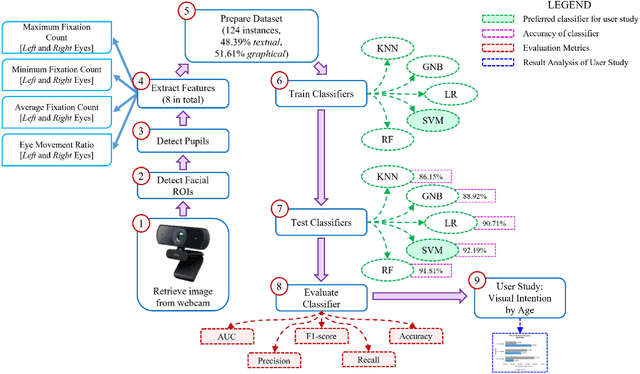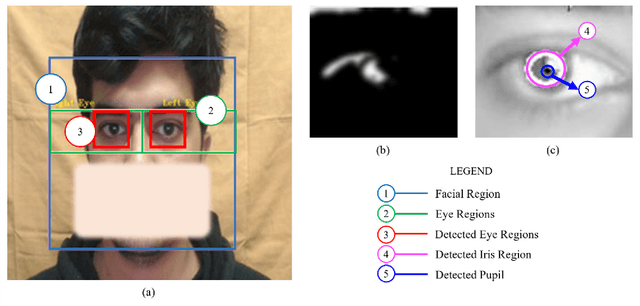Shahed Anzarus Sabab
Systems and Software Lab, Department of Computer Science and Engineering, Islamic University of Technology, Department of Computer Science, University of Manitoba, Winnipeg, Canada
VIS-iTrack: Visual Intention through Gaze Tracking using Low-Cost Webcam
Feb 05, 2022



Abstract:Human intention is an internal, mental characterization for acquiring desired information. From interactive interfaces containing either textual or graphical information, intention to perceive desired information is subjective and strongly connected with eye gaze. In this work, we determine such intention by analyzing real-time eye gaze data with a low-cost regular webcam. We extracted unique features (e.g., Fixation Count, Eye Movement Ratio) from the eye gaze data of 31 participants to generate a dataset containing 124 samples of visual intention for perceiving textual or graphical information, labeled as either TEXT or IMAGE, having 48.39% and 51.61% distribution, respectively. Using this dataset, we analyzed 5 classifiers, including Support Vector Machine (SVM) (Accuracy: 92.19%). Using the trained SVM, we investigated the variation of visual intention among 30 participants, distributed in 3 age groups, and found out that young users were more leaned towards graphical contents whereas older adults felt more interested in textual ones. This finding suggests that real-time eye gaze data can be a potential source of identifying visual intention, analyzing which intention aware interactive interfaces can be designed and developed to facilitate human cognition.
 Add to Chrome
Add to Chrome Add to Firefox
Add to Firefox Add to Edge
Add to Edge